- 0044 (0)1295 758 150
- [email protected]
A culturally, topographically, historically and ethnically rich country - full of romance, colour and mystique

Incredible India
India – Mother India – ‘She’ – Hindustan - is a melting pot of history, culture, religion, people, language, cuisine, geography and topography . As such there are few such exciting nor diverse countries on earth and it is a deeply spiritual, enlightening, romantic, beautiful place to visit. Having succumbed over the centuries to occupying foreign powers – the Mughals, Dutch, French, Portuguese and English - and, indeed marauding neighbouring states invading each other, this has given rise to a great mixture of cultures and architecture, and the influences can still be clearly seen today throughout the country. Boasting one of the oldest civilisations in the world, today India is a thriving republic, rapidly growing and developing – in the face of five-thousand-year-old traditions, it is going from strength to strength.
Home to c. 1.4 billion people India ‘hums’ day and night. Despite its vast population there are still many wilderness areas to lose yourself in, along with fabulous, buzzy cities to immerse yourself in. The 7th largest landmass in the world it has 4400 miles of stunning coastline - with the Arabian Sea to its left and the Bay of Bengal to the right - all around its southern two thirds, and the northern areas are bordered by the imposing Himalaya and the countries of Pakistan, China, Tibet, Nepal, Bhutan, Bangladesh and Burma. The outrageously beautiful, craggy peaks of the high Himalaya and the high altitude plateau of Ladakh (aka Little Tibet) give way to the equally breath-taking foothills of Kashmir and the northern states which boast valleys and meadows and rivers that are eye-wateringly lovely. Contrastingly, head west to scorching, desolately beautiful deserts or to the east for glorious, virgin forests; or to the centre for the heart of ‘wildlife’. The south comprises a dividing, arid plateau which drops down to the palm-clad coastal plains and to the dripping, tropical jungles and plantations of the south. The holy Ganges, along with many other huge rivers cut through many parts of the country and provide a vital life source to much of the country.
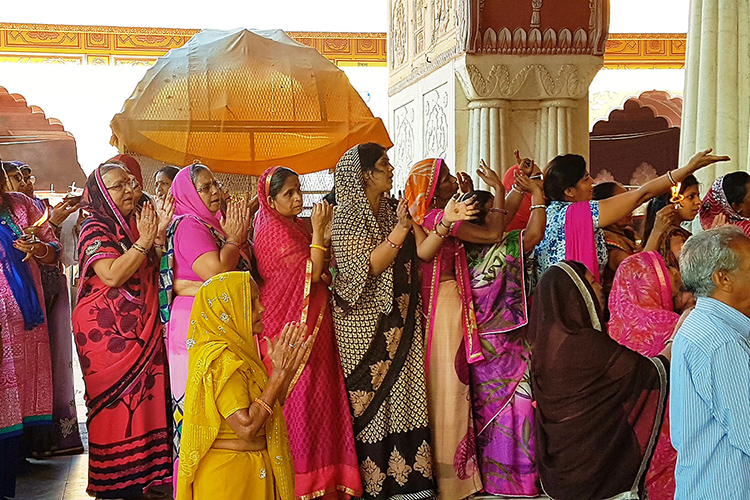
India is a land of diversity, with a rich tapestry of people that make up its vibrant society. It is home to myriad ethnicities (Indo-Aryan, Dravidian and Mongoloid); languages (it is a linguist’s paradise with Hindi being the national language, English spoken almost through the country, but with c. 1950 other languages or dialects); and religions (80% are Hindu but it has the 3rd largest Muslim population along with Christians, Sikhs, Buddhists, Jains, Jews, Zoroastrians, Baha’is. One of the remarkable aspects of the people of India is their strong sense of community and family values. Family plays a central role in Indian society, and individuals often prioritize the needs and well-being of their loved ones above their own.
Respect for elders and the importance of maintaining strong familial bonds are deeply ingrained in Indian culture . Indian’s also have and admirable passion for education and the children take great pride in going to school, dressed immaculately – punishment for them would be NOT going to school. They are a highly intelligent, driven people who strive for the best in everything. Along with a strong sense of family, they are a deeply spiritual nation – religion comes first for many – and it is known for its celebration of festivals and cultural traditions. From Diwali, the festival of lights, to Holi, the festival of colours, Indians embrace these occasions with great enthusiasm and joy and they provide a coming together / a unity among the people which transcends regional and religious boundaries. While poverty and social inequality remain challenges, the people of India demonstrate incredible resilience and perseverance in the face of adversity. Sadly, many people from rural communities are migrating to the cities but, despite the differences that exist, there is a strong spirit of unity among Indians, evident in times of crisis where communities invariably come together to support and uplift one another
Travelling in India is a gourmet’s treat and Indian cuisine is a culinary treasure trove that delights the taste buds with its rich flavours, aromatic spices, and diverse range of dishes. It is renowned worldwide for its complexity, depth, and regional variations. A melee of dishes proliferates throughout India’s different states with traditional recipes being passed down over the centuries within India but also with influences from abroad. Vegetarians and vegans have an abundance of choice in India - perhaps more so than anywhere else on earth - as there is a significant vegetarian population.
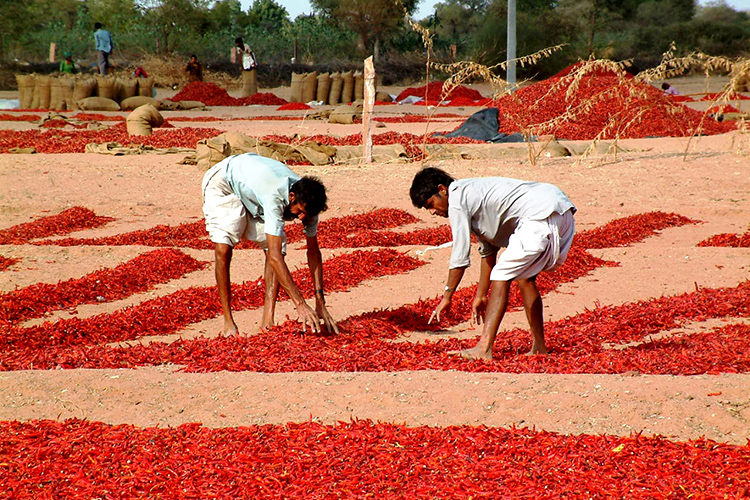
Some states tend to be more meat based with drier / tandoori food. Others have rich, tasty sauces which are more spice / tomato / coconut based. Bread and rice are staples throughout the country and the choice of scrumptious rotis is endless! The differing regions tend to have their own signature dishes and culinary techniques with the coastal regions known for their seafood delicacies, while the northern regions excel in rich and creamy curries. South Indian cuisine is famous for its spicy and tangy flavours, and the eastern states offer unique sweets and desserts like rasgulla and sandesh. From slow-cooked curries to quick stir-fries and elaborate tandoori preparations and thalis, to fragrant biryanis and delectable street food, Indian cuisine is a gastronomic delight that showcases the country's cultural diversity and culinary prowess.
Wherever you roam in India you will be bowled over by the staggering architecture . From colourful, ornate temples in the south and extraordinary terracotta temples in the east ; to majestic palaces and mighty forts perched impossibly on rocky outcrops; to ancient Buddhist and Hindu ruins and stupas; to fabulous Mughal monuments and Colonial structures – there is something for everyone and it’s awe-inspiring in its grandeur and history. Much of it is in good condition or being beautifully restored and is joy to behold.
The Subcontinent is not a ‘new’ destination and has been luring visitors back time and again for many years. Similarly, tourism is no longer in its infancy and its infrastructure has developed enormously over the last few years. It is not a place, as perceived to be by many, where things invariably go wrong, with poor service and mediocre hotels. Indeed, there is no other country in the world where you will find such glorious palace hotels, small, family run forts, and a people with an inestimable and overall desire to please, whose second nature is friendliness and generosity.
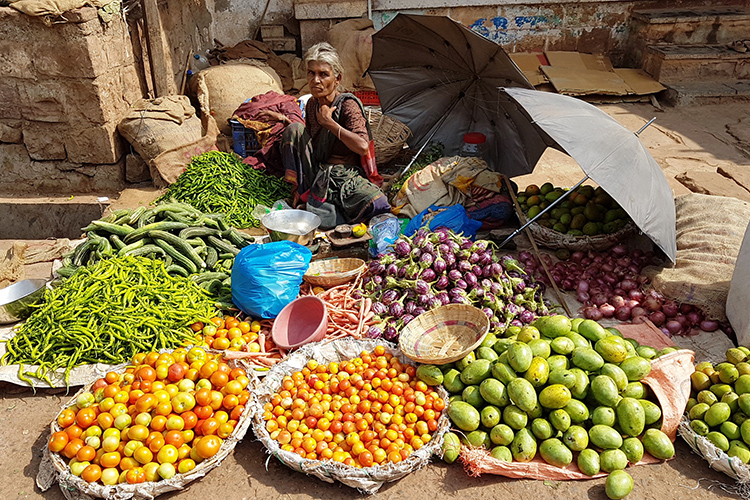
For the first time visitor, the Subcontinent is an invasion of the senses with the sights, sounds, smells and tastes being incomparable to anything you have experienced before. The contrasts are immense – noisy cities become silent at night; the heat of the south to the cold of the north; the monochrome of the land to the colour of the people – it’s all intoxicating. The lure of colour and extraordinary light, the exotic dress, the delicious and vast range of food - all different wherever you venture - are what will constantly tempt you back after your initial ‘taste’. However, many times you have travelled there, India remains an experience. We aim to heighten this into one never to be forgotten with every visit revealing aspects of the country that you never knew existed and urging you to return and discover more.
It is entirely understandable that so many people are compelled to return to India year on year as it is a country effectively made up of so many countries; its people speaking different languages, practising different religions and being of different height, colour and origin in almost every state. The country’s diversity has so much to occupy the returning or inquisitive traveller that many find themselves being drawn back year after year with a thirst to discover just that little bit more about this colourful and mysterious continent. With its varied topography and different climatic zones, India is very much a destination for all seasons . There is no other country which can boast such a wealth of history and culture; barren deserts and huge, arid plateaux; rolling foothills; one of the most mighty mountain ranges in the world; verdant, tropical jungle; glorious stretches of golden beaches; wildlife sanctuaries and innumerable ancient monuments and historic architecture.
Being like so many countries wrapped in on one, you are able to ‘pick your country’ so to speak, and the joy of India is that you can visit at any time of year and find a comfortable climate. Travel to the jungles, beaches, temple towns, ancient monuments and wildlife reserves in Winter; travel to the glorious hill stations during Spring and Autumn; and travel to the north and the windswept plains, arid mountain deserts and valleys of Ladakh for a memorable summer holiday (June to August) when much of the rest of India is enjoying its welcome monsoon.
Come to India to experience the most incomparable mosaic of richness of nature, heritage, history, culture, and topography – it is a land that will never disappoint.
There are no winners in the elephant tourism industry
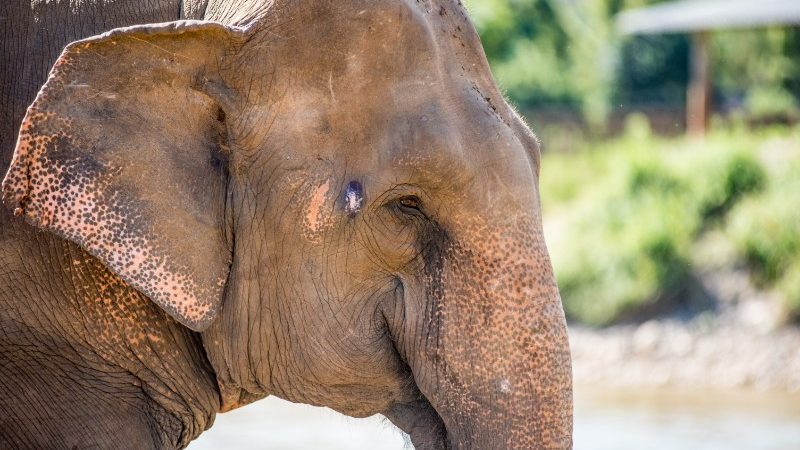
‘A mahout is an elephant rider, trainer, or keeper. Usually, a mahout starts as a boy in the family profession when he is assigned an elephant early in its life. They remain bonded to each other throughout their lives’.
That’s Wikipedia’s definition of a mahout and one which will resonate with many tourists who have a romantic vision of the life of mahouts and their relationship with elephants. Sadly, the reality in the elephant tourism industry is very different.
Our new research, working with the Department of Sociology and Anthropology at Chiang Mai University, shows the idealistic, commonly held perception of mahouts is quite far from the truth.
We know with a growing tourism industry and demand for elephant entertainment, the traditional role of mahouts is being increasingly taken over by regular labourers, lacking in skills and training.
It’s not to say mahouts in the traditional Wikipedia defined sense don’t exist – they do, but it’s the exception, not the rule.

While elephants suffer from poor living conditions, being forced to carry people on their backs, mahouts are experiencing low pay for a high-risk job, with many suffering injuries and having little financial security. The lack of comprehensive training provided for mahouts, particularly those receiving only one month’s training, puts both mahouts and tourists interacting with elephants under their supervision, at serious risk of injury too.
RELATED: HOW WE CHANGED THE ELEPHANT RIDING INDUSTRY
As well as the animal welfare concerns, the risk of injury to people is something the travel industry should be taking extremely seriously.
Why did we do this research?
Much of our research on the issue of elephant tourism to date has rightly focused on the welfare conditions of elephants suffering in entertainment venues throughout Asia.
Through our work studying wildlife entertainment venues across Thailand, we discovered the role of mahouts is unclear and outdated.
Now with university’s researchers speaking with 200 mahouts at 80 camps across Thailand, we have a stronger understanding of the life of elephant mahouts today.
Better for elephants and people
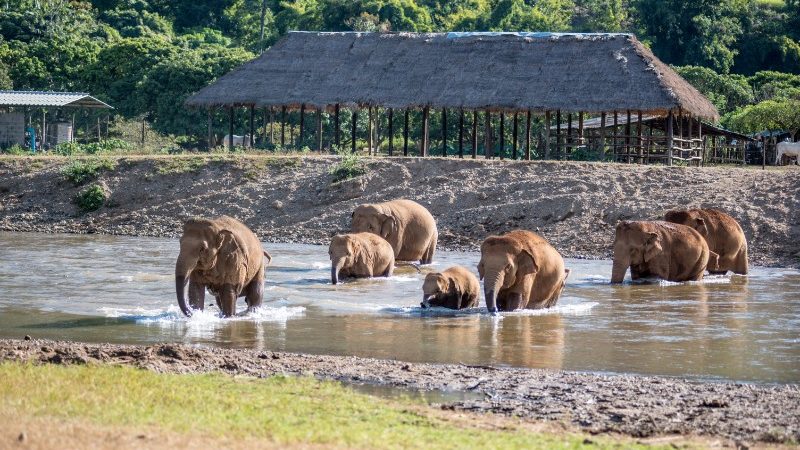
Elephant Nature Park in Chiang Mai, a responsible rehabilitation centre visited on Intrepid trips.
We know mahouts play a crucial role in the welfare of captive elephants and are an important factor in our work to transition elephant entertainment camps into elephant-friendly venues.
In contrast to the situation in riding and entertainment camps across Thailand, higher welfare, elephant-friendly venues are better for elephants and people, encouraging venue owners to value and care for both elephants and their mahouts*.
Our study showed, 65% of mahouts often or very often use a bull-hook or a sharp nail stick to control their elephant at riding and entertainment camps.But, in true-elephant friendly venues there is no need for such tools and control, except in real emergencies. This is because in higher welfare venues, tourists are not in direct contact with elephants, and instead primarily get to watch elephants move freely. This is better for the elephants and safer for Mahouts.
READ MORE ABOUT INTREPID’S ANIMAL WELFARE POLICY
We’ve seen this for ourselves in places like Elephant Valley Thailand, Mahouts Elephant Foundation (MEF) and Boon Lott’s Elephant Sanctuary (BLES), three of the high welfare venues our Taken for a Ride report showed doing great things for captive elephants.
While an elephant can only be truly free in the wild, these types of venues are what we need to see more of, to improve the lives of the 3,000 elephants currently captive for tourism in Asia.
Intrepid Travel has led the way for elephant protection in the tourism industry and continues to encourage their customers to be animal-friendly travellers.
VISIT THAI ELEPHANTS (RESPONSIBLY) ON A SMALL GROUP TOUR WITH INTREPID TRAVEL
The fact is, if you can ride or touch an elephant, or watch it perform, chances are the elephant has been subjected to cruel training and is living in poor conditions.
This World Elephant Day , do the right thing for elephants and mahouts and only visit elephant-friendly venues when you can observe elephants from afar, where they’re free to just be elephants.
When you donate to The Intrepid Foundation, 100% of the profits go towards ending elephant cruelty. Show your support .
*Our Taken for a Ride report assessing the conditions for 3,000 elephants used in tourism in Asia found that in the lowest scoring venues, mahouts are more likely to be unskilled labourers who have received only brief training on how to handle elephants. Consequently, force and punishment of elephants is applied more commonly. At the highest-ranking venues, our study found that mahouts are more highly recognised by the venues, often personally introduced to the visitors, allowing them to be respected for their skills. At these venues, the mahouts also receive training in managing elephants more humanely, without using force.
All images by Patrick O’Neill.
World Animal Protection
World Animal Protection has been moving the world to protect animals for more than 50 years. Our vision is of a world where animals live free from suffering. We work on programs globally – helping governments and people care for animals in communities, disaster zones, farming, and the wild – as well as educating the world about the mistreatment of wildlife in some sectors of the tourism industry. We strive to end the needless suffering of animals, influence decision-makers to put animals on the global agenda and inspire people to change animals’ lives for the better.
You might also like
How we changed the elephant riding industry, this is why we no longer ride elephants, 11 responsible travel tips for your next trip, 3 reasons why you shouldn’t drink luwak coffee..., 5 climate-conscious, low-impact trips you can take in..., 7 ways to travel responsibly in the galapagos..., all you need to know: snorkelling in the..., reconnect: explore australia and discover indigenous experiences, enrich your queensland holiday with these first nations..., 10 incredible first nations experiences to book in..., how intrepid has actually started to rebuild responsibly.
Mahout Resort Wayanad - An Experiential Jungle Stay with Waterfall
Wayanad Road, 673123 Kalpetta, India – Excellent location - show map
Cleanliness
Value for money
This is a carousel with rotating slides. It displays featured reviews of the property. Use Next and Previous buttons to navigate.
Located in nature and isolated. Perfect destination for people to relax.

The Staff was very courties and helpful. The Location is amazing

We really enjoyed our stay in this cabin with the nature right outside. Nice staff!

Staff were exceptional. Helped us and were ready all the time. Place is really good, contact the staff before you reach there, because it's better to take their jeep to the resort, unless you have a 4 wheel drive vehicle, road to the resort is not tarred. There's a small waterfall 50 meters away from the resort and it's great. Overall won't forget this place, will be visiting again.

Location is good deep forest can spend nice evenings.
The local food prepared by them was delicious. The fried fish prepared was fresh and delicious. Also Puttu with curry was my favourite food item. They had games in the resort for passing time especially enjoyed playing table tennis with my partner in the evening time.
Awesome location away from city hustle and bustle enjoy the life in the lap of nature .
Property is located at the base of Chembra Peak and it is very much scenic and calm.Property also has private water falls.. also off-road drive on 4*4 jeep was awesome..
The location and ambience. Staff were also very helpful
The location of the resort is in the dead center of the forest, so if you're on a vacation and need to absorb nature and be at a peaceful place then this is it.

Mahout Resort Wayanad - An Experiential Jungle Stay with Waterfall Reserve now
Lock in a great price for Mahout Resort Wayanad - An Experiential Jungle Stay with Waterfall - rated 8.7 by recent guests.
Enter dates to get started.
Featuring a garden and views of lake, Mahout Resort Wayanad - An Experiential Jungle Stay with Waterfall is a recently renovated holiday park set in Kalpetta, 14 km from Kanthanpara Waterfalls. Boasting a 24-hour front desk, this property also provides guests with an outdoor fireplace. There is a sun terrace and guests can make use of free WiFi and free private parking. The holiday park offers certain units that feature a balcony and mountain view, and the units are fitted with a private bathroom and a desk. At the holiday park, all units have bed linen and towels. Guests may eat in the on-site family-friendly restaurant, which is open for dinner, lunch, brunch and high tea. For guests with children, the holiday park provides indoor and outdoor play areas. Guests at Mahout Resort Wayanad - An Experiential Jungle Stay with Waterfall can enjoy table tennis on-site, or go hiking or walking tours in the surroundings. Chembra Peak is 16 km from the accommodation, while Soochipara Falls is 18 km away. The nearest airport is Calicut International Airport, 94 km from Mahout Resort Wayanad - An Experiential Jungle Stay with Waterfall.
Couples particularly like the location — they rated it 9.4 for a two-person trip.
Distance in property description is calculated using © OpenStreetMap
- Free parking
- Family rooms
- Room service
- Non-smoking rooms
Property highlights
Top location: Highly rated by recent guests (9.3)
Free private parking available on-site
Saved to 190 lists

Availability
Select dates to see this property's availability and prices
Property practices
Categories:, see what guests loved the most:.
Host Information
Company information
Property information
Neighbourhood information
Languages spoken
Property surroundings
Restaurants 1 restaurant on site.
- Cuisine Chinese • Indian • Italian • Asian • Grill/BBQ
- Open for Breakfast • Brunch • Lunch • Dinner • High tea
- Ambiance Family friendly • Traditional • Modern • Romantic
- Dietary options Halal • Vegetarian
Facilities of Mahout Resort Wayanad - An Experiential Jungle Stay with Waterfall Great facilities! Review score, 8.4
- Private bathroom
- Outdoor fireplace
- Picnic area
- Outdoor furniture
- Sun terrace
- BBQ facilities
- Tour or class about local culture Additional charge
- Themed dinner nights Additional charge
- Walking tours
- Badminton equipment
- Table tennis
- Children's playground
- Tennis court
- Coffee house on site
- Fruits Additional charge
- Breakfast in the room
- Invoice provided
- Private check-in/check-out
- Concierge service
- Luggage storage
- Express check-in/check-out
- 24-hour front desk
- Kids' outdoor play equipment
- Indoor play area
- Board games/puzzles
- Daily housekeeping
- Trouser press Additional charge
- Ironing service Additional charge
- Laundry Additional charge
- Business centre
- Meeting/banquet facilities
- Fire extinguishers
- CCTV outside property
- CCTV in common areas
- Smoke alarms
- Security alarm
- 24-hour security
- Shuttle service Additional charge
- Grocery deliveries
- Allergy-free room
- Water slide
See availability House rules
From 14:00 to 18:00
From 11:00 to 12:00
Cancellation/ prepayment
Cancellation and prepayment policies vary according to accommodation type. Please enter the dates of your stay and check the conditions of your required room.
Children and beds
Child policies
Children of any age are welcome.
To see correct prices and occupancy information, please add the number of children in your group and their ages to your search.
Cot and extra bed policies
Prices for extra beds are not included in the total price, and will have to be paid for separately during your stay.
The number of extra beds allowed is dependent on the option you choose. Please check your selected option for more information.
There are no cots available at this property.
All extra beds are subject to availability.
No age restriction
There is no age requirement for check-in
When booking more than 6 rooms, different policies and additional supplements may apply.
Accepted payment methods
Cash Mahout Resort Wayanad - An Experiential Jungle Stay with Waterfall accepts these cards and reserves the right to temporarily hold an amount prior to arrival.
Free! Pets are allowed. No extra charges.
Legal information
Faqs about mahout resort wayanad - an experiential jungle stay with waterfall, is mahout resort wayanad - an experiential jungle stay with waterfall popular with families.
Yes, Mahout Resort Wayanad - An Experiential Jungle Stay with Waterfall is popular with guests booking family stays.
How far is Mahout Resort Wayanad - An Experiential Jungle Stay with Waterfall from the centre of Kalpetta?
Mahout Resort Wayanad - An Experiential Jungle Stay with Waterfall is 2.8 miles from the centre of Kalpetta. All distances are measured in straight lines. Actual travel distances may vary.
What is there to do at Mahout Resort Wayanad - An Experiential Jungle Stay with Waterfall?
- Children's playground
- Tour or class about local culture
- Themed dinner nights
Does Mahout Resort Wayanad - An Experiential Jungle Stay with Waterfall have a restaurant on site?
- Mahout Restaurant
How much does it cost to stay at Mahout Resort Wayanad - An Experiential Jungle Stay with Waterfall?
The prices at Mahout Resort Wayanad - An Experiential Jungle Stay with Waterfall may vary depending on your stay (e.g. dates you select, hotel's policy etc.). See the prices by entering your dates.
What are the check-in and check-out times at Mahout Resort Wayanad - An Experiential Jungle Stay with Waterfall?
Check-in at Mahout Resort Wayanad - An Experiential Jungle Stay with Waterfall is from 14:00, and check-out is until 12:00.
The best of Kalpetta
- Chembra Peak
- Kanthanpara Waterfalls
- Pookode Lake
- Soochipara Falls
- Lakkidi Viewpoint
- Karapuzha Dam
- Thusharagiri Falls
- Heritage Museum
- Karlad Lake
- Neelimala Viewpoint
- Edakkal Caves
- Banasura Sagar Dam
Most popular cities
- Sultan Bathery
- Mananthavady

Stay in the know
Error: Please enter a valid email address
Error: Sorry. An error has occurred.
Thanks! We've sent you an email so you can complete your subscription
Personalised recommendations
We provide personalised recommendations based on your activity on our platform. If you prefer, you can opt-out of this option. Keep in mind, opting-out only affects your current device. You must therefore adjust this setting on each device as necessary to reflect your preference.
Verified reviews from real guests.
We have more than 70 million property reviews, and they're all from real, verified guests .
How does it work?
It starts with a booking.
The only way to leave a review is to first make a booking. That's how we know our reviews come from real guests who have stayed at the property.
Followed by a trip
When guests stay at the property they check out how quiet the room is, how friendly the staff are and more.
And finally, a review
After their trip, guests tell us about their stay. We check for naughty words and verify the authenticity of all guest reviews before adding them to our site.
If you booked through us and want to leave a review, please sign in first.
Check-in date
Check-out date
Save big in Kalpetta
Get exclusive access to member-only deals by email.
For a limited time only
Hooray, you're now subscribed!

8 Best Waterfalls Near Chandigarh

Karnala Fort – Entry Fee, Timings, Architecture, Trekking
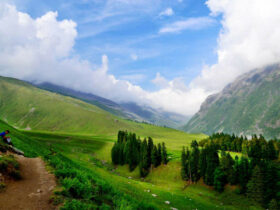
11 Popular Places To Visit Near Amritsar Within 100 Km

A Day in the Life of an Elephant Mahout at Dubare: Experiencing the Gentle Giants
26 Best Places To Visit in Jaisalmer – Explore The History Of Rajput Era
Welcome to Dubare, a place where ancient traditions meet the majestic elephants. In this article, we will take you on a virtual journey to explore the daily life of an elephant mahout, providing a glimpse into the remarkable bond between man and beast.
The Role of an Elephant Mahout
Table of Contents
At Dubare, an elephant camp nestled in the beautiful Coorg region of India, mahouts play a vital role in the care and management of elephants. Mahouts are highly skilled individuals entrusted with the responsibility of guiding, training, and maintaining the well-being of these magnificent creatures. Their expertise is passed down through generations, and they possess an intimate knowledge of elephant behavior, health, and communication.
Early Morning Routine
The day for an elephant mahout at Dubare begins with the first rays of the sun. Rising early, they head towards the riverbank where the elephants are brought for their morning bath. This routine not only serves as a refreshing start for the elephants but also provides an opportunity for mahouts to inspect their overall health and well-being. They closely observe any signs of illness or injury and report it to the camp veterinarians for necessary attention.
Feeding and Health Care
After the bath, mahouts guide the elephants to their feeding area. A well-balanced diet is crucial for their health, and mahouts ensure that elephants receive the right quantity of food comprising a variety of grasses, leaves, fruits, and specially formulated supplements. The elephants are closely monitored during feeding to ensure they consume an appropriate amount.
Mahouts also participate in routine health check-ups, which include examining the elephants’ skin, eyes, teeth, and overall body condition. They provide care and treatment when required, working alongside veterinarians to maintain the well-being of the elephants.
Must read The Fascinating History of Dubare Elephant Camp: Exploring its Heritage and Conservation Efforts
Training and Enrichment Activities
A significant part of a mahout’s responsibility involves training the elephants and facilitating enrichment activities. Mahouts use positive reinforcement techniques to teach the elephants various commands, ensuring they understand and respond appropriately. This training helps elephants build trust with their mahouts and enhances their ability to participate in various activities, such as carrying logs, interacting with visitors, and participating in ceremonies. To provide mental stimulation and prevent boredom, mahouts engage the elephants in enrichment activities. These activities include puzzle feeders, sensory games, and social interaction with other elephants, all of which contribute to the overall well-being of the animals.
Interactions with Visitors
At Dubare, visitors have the unique opportunity to interact with elephants under the guidance of mahouts. Mahouts share their vast knowledge about elephants, their behaviors, and the importance of conservation efforts. They facilitate activities like elephant rides and river baths, ensuring the safety of both elephants and visitors. Mahouts also play a crucial role in educating visitors about responsible tourism and the conservation efforts being undertaken at Dubare. They emphasize the importance of ethical elephant tourism, encouraging visitors to appreciate and respect these gentle giants while preserving their natural habitats.
Afternoon Activities
In the afternoon, the elephant mahouts engage in various activities to keep the elephants active and stimulated. One of the significant responsibilities is taking the elephants for walks in the nearby forests. These walks allow the elephants to exercise, explore their natural surroundings, and forage for fresh vegetation. Mahouts carefully accompany the elephants, ensuring their safety and well-being throughout the walk. Additionally, mahouts participate in grooming sessions, where they clean the elephants’ ears, eyes, and other body parts. Grooming not only helps maintain the elephants’ hygiene but also strengthens the bond between the elephants and their mahouts.
Also read River Rafting at Dubare Elephant Camp
Evening Rest and Care
As the sun begins to set, the elephant mahouts guide the elephants back to their resting areas. These areas provide a comfortable space for the elephants to relax, unwind, and rest for the night. Mahouts ensure the bedding is clean, soft, and free from any debris that may cause discomfort to the elephants. During this time, mahouts also perform routine checks to monitor the elephants’ overall well-being. They inspect their skin for any signs of irritation or infection and ensure that they are in a calm and relaxed state. Any abnormalities are promptly reported to the camp veterinarians for further examination and treatment if necessary.
Mahout-Elephant Bond
The relationship between a mahout and an elephant is built on trust, respect, and mutual understanding. Mahouts spend years cultivating a deep connection with the elephants under their care. Through gentle and patient interactions, they develop an unspoken language and bond that allows them to communicate effectively. Mahouts become attuned to the subtlest cues of an elephant’s mood, ensuring they can anticipate and address any discomfort or distress. This bond plays a crucial role in the overall well-being of the elephants and contributes to their emotional and mental enrichment.
You may also like 6 Must Do Activities At Dubare Elephant Camp
Conservation Efforts
At Dubare, elephant mahouts actively participate in conservation efforts. They educate visitors about the importance of elephant conservation, the threats faced by these magnificent creatures, and the need to protect their natural habitats. Mahouts raise awareness about the significance of responsible tourism and encourage visitors to support ethical practices that prioritize the well-being of elephants.
Furthermore, mahouts collaborate with wildlife organizations and local communities to promote conservation initiatives. They engage in research programs, assist in anti-poaching activities, and contribute to habitat restoration efforts. Through their dedication and involvement, mahouts play a crucial role in safeguarding the future of elephants and the ecosystems they inhabit.
Recommended Read Dubare Elephant Camp Timings, Entry Ticket Cost, Elephant Interactions – Complete Guide Exploring the Flora and Fauna of Dubare Elephant Camp
A day in the life of an elephant mahout at Dubare is not merely a routine but a profound connection between man and elephant. With unwavering dedication and immense knowledge, mahouts ensure the well-being, enrichment, and conservation of these gentle giants.
As you reflect on this virtual journey, we hope you have gained a deeper understanding of the invaluable role played by mahouts at Dubare. Their commitment to preserving the majestic elephants and sharing their wisdom with visitors is a testament to the harmonious relationship between humans and animals.
Related Posts
- Golden Temple Timings, Entry Fee, History, Nearby Attractions
- 15 Best Restaurants in Manali You Must Try
- 16 Best Places To Visit in Ooty – The Queen of Hill Stations
- 13 Adventure Sports in Manali That You Must Try
- Dodda Ganapathi Temple, Bangalore – Timings, Entry Fees, History
6 Popular Hill Stations Near Gokarna – A Serene Escape Amidst Nature

10 Best Places Near Gokarna – Exploring Karnataka’s Hidden Treasures

16 Best Places To Visit in Gokarna
Explore destinations.
- Dharamshala
- Indian Destinations
- Delhi Itineraries
- Chikmagalur
- Kanchipuram
- Rameshwaram
- Uttarakhand
- Weekend Getaways
- Weekend Getaways Near Bangalore
- Weekend Getaways Near Delhi
- Weekend Getaways Near Mumbai
16 Best Trekking Places Near Bangalore
Introduction To The Best Trekking Places Near Bangalore Table of Contents Toggle Introduction To The Best Trekking Places Near BangalorePopular ...
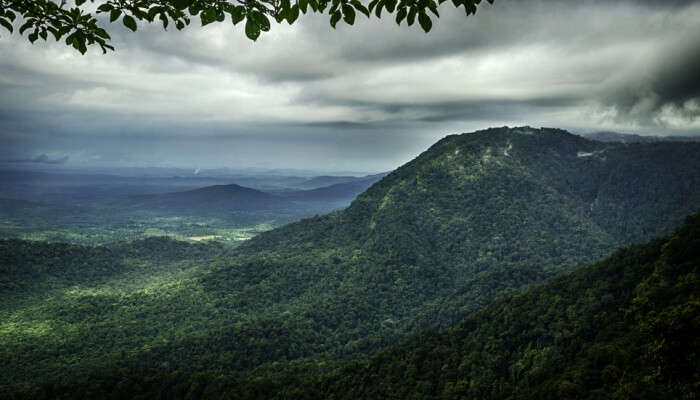
Introduction to Hill Stations Near Gokarna Table of Contents Toggle Introduction to Hill Stations Near GokarnaPopular Hill Stations Near GokarnaBiligiriranga ...
Introduction to Best Places Near Gokarna Table of Contents Toggle Introduction to Best Places Near GokarnaPopular Places to Visit in ...
22 things you need to know before visiting India

Dec 15, 2023 • 14 min read
India is a feast for the senses and we've got everything you need to know before you visit © Andrii Lutsyk / Ascent Xmedia / Getty Images
India is a place that overwhelms your senses in the best possible way – nowhere else delivers quite the same barrage of sights, sounds and sensations as this continent-sized country at the heart of Asia.
It would take a lifetime to see all of India , let alone understand every nuance and facet of this nation of 1.4 billion inhabitants. But with a little preparation, you can learn to navigate the richness of this country, from its snow-capped peaks and velvety beaches to its historic temples and luxuriant palaces.
We've collated the top things you need to know about visiting India, but the journey begins before you leave home. Apply for your Indian visa online for a smooth arrival on the subcontinent. Read on for 22 more insider tips that will help make your vacation unforgettable.
1. Plan your trip around the seasons
India has a reputation for being hot and humid, but with beaches, mountains, hills, coastlines and plains all jammed into a relatively small geographical area, the climate is quite diverse. The southwest monsoon brings rainy weather to most of the country from June to September, but this is the best time of year to visit the high-altitude deserts of Ladakh , although depending on the route you take, you risk encountering landslides and floods.
In the far south, there’s also a milder rainy season from October to December. The ideal weather window for travel is from October to May, though temperatures and humidity climb to agonizing levels from March onwards in the run-up to the monsoon. If you find yourself in India in the spring, head to the Himalayan foothills for milder temperatures and good trekking conditions.
2. Get your jabs before you travel
There is no official requirement for vaccinations to enter India (although yellow fever vaccination is needed if you are traveling from a country where the disease is endemic).
That said, it is important that you contact a health professional at least eight weeks before you travel to ensure your jabs are up to date. Vaccinations for diphtheria and tetanus, hepatitis A and B, polio and typhoid are usually recommended, on top of childhood vaccinations for measles, mumps, rubella and varicella.
Vaccinations worth considering for longer trips include Japanese B encephalitis, meningitis and rabies. Monkeys, dogs and cats can all carry the rabies parasite, and infection is fatal if untreated.
3. Take malaria precautions
Depending on where in India you are traveling to, you may want to speak to your healthcare provider about taking a course of anti-malarial tablets. For instance, northeastern and eastern parts of India, as well as the city of Mangalore, have a higher malaria risk.
Always take precautions to avoid mosquito bites – this will also help you avoid dengue fever, a viral infection that is transmitted by mosquitoes to humans. Sleeping under a mosquito net, wearing long sleeves and trousers in light colors, and using a repellent and/or a plug-in mosquito killer with a high concentration of DEET (diethyltoluamide) is advisable.
4. Get insured
Travel insurance is essential for India. Depending on where you travel to, you may find public hospitals are poorly equipped. Additionally, most private clinics and hospitals require payment ahead of treatment. Make sure you are covered for emergency evacuation and also for any adventure activities you plan to get involved in.
If you’re unlucky enough to be a victim of crime, contact the local police station or dial 100 or 112, the national emergency number. You’ll need to get the police to file a report (a “FIR" – First Information Report) to make a claim on your travel insurance.
5. Book ahead for busy times and festivals
India can get very busy from November to February, so affordable accommodation is usually swamped in peak season. It’s a good idea to book ahead, either directly with the venues or via booking aggregator sites such as Agoda and MakeMyTrip .
Also, book train tickets in advance where possible , particularly for popular routes. Tickets can be booked (with a fair amount of hassle) via the government booking site IRCTC or more easily through local booking sites such as 12Go or Cleartrip .
6. Plan your comms before you travel
Many things in India (including train bookings or ordering food online) get easier if you have a local SIM card. Bring an unlocked phone from home (or pick one up locally) and get a phone shop to sign you up for a local pay-as-you-go SIM package on arrival. You’ll need to bring passport photos and photocopies of your passport ID pages to complete the application.
7. Check your lunar calendars
While India officially follows the Gregorian calendar, the major festivals for Hinduism, Buddhism, Jainism, Islam and several other religions follow lunar calendars and fall on different dates from year to year. Always check festival dates before you book your trip (bearing in mind these dates are subject to change); the Indian government maintains a useful online list of public holidays .
8. Learn local etiquette
English is the lingua franca in most metropolitan areas in India, and you’ll get away with polite hellos, goodbyes and thank yous in smaller towns too. However, if you’re traveling in northern India, you can say "namaste" (I bow to you) with your hands together in a prayer-like gesture in front of your chest. Similarly, when meeting Muslims in north India, you can say "salaam alaikum" (peace be with you) – the correct response is "alaikum salaam." Most of the time, it’s the effort that’s welcomed over pronunciation, so don’t be shy!
Shaking hands is a standard business greeting between men, but outside metropolitan regions, men and women rarely shake. Only ever use your right hand. The same rule applies when passing things to people – including money.
If you get invited to someone’s home, bring a small gift (flowers or sweets are always a safe bet) and remove your shoes before entering. It’s polite to eat and drink what you are offered, even if you don’t really fancy it.
9. Dress modestly
Depending on where in India you are, modesty is taken seriously – especially for women. Travelers of any gender will have an easier time if they wear loose-fitting clothing that covers their legs and arms. Swimwear is only appropriate for the beach – although it is not uncommon to see locals swim fully clothed. To fit in, consider investing in a kurta pyjama (a traditional garment resembling a long shirt and loose trousers for men) or a salwar kameez (a long shirt, loose trousers and scarf for women).
10. What to eat and how to eat it
Many religions in India have their own dietary rules. Muslims avoid pork, many Hindus avoid beef, and some Hindus and Buddhists are vegetarian or vegan. Many Jains are vegetarians who avoid some vegetables (most notably onions, garlic and potatoes) and who try to avoid causing harm to all living creatures. These rules mean vegan and vegetarian food is often easy to find in India.
Eating with your hands is the norm in many restaurants, particularly in parts of southern India. Take your cue from other patrons in the restaurant, and remember to eat with your right hand. Mix rice and curry into balls with your fingers and push it into your mouth with your thumb. Some thalis (plate meals consisting of multiple dishes served in tandem) are served not on a plate but on a washed and flash-heated banana leaf.
11. Haggling is not a game of life and death
Haggling for a fair price when buying things – in street stalls and open-air markets – is a way of life in India. Although it can sometimes be a frustrating experience, losing your temper is extremely bad form – if you can’t agree on a price with the vendor that you are both happy with, politely decline and shop somewhere else.
The rules of the game are as follows. The vendor will quote you a price that is more than the item is worth, then you’ll come back with a counter-offer, working up from there until you reach a mutually agreeable figure.
The “walking away” trick may bring a few last-minute adjustments, but before long, you’ll reach a threshold that the vendor won’t go below. Throwing in extra items may bring a discount on the overall cost. Many travelers prefer not to haggle in places where the money goes directly to artisans.
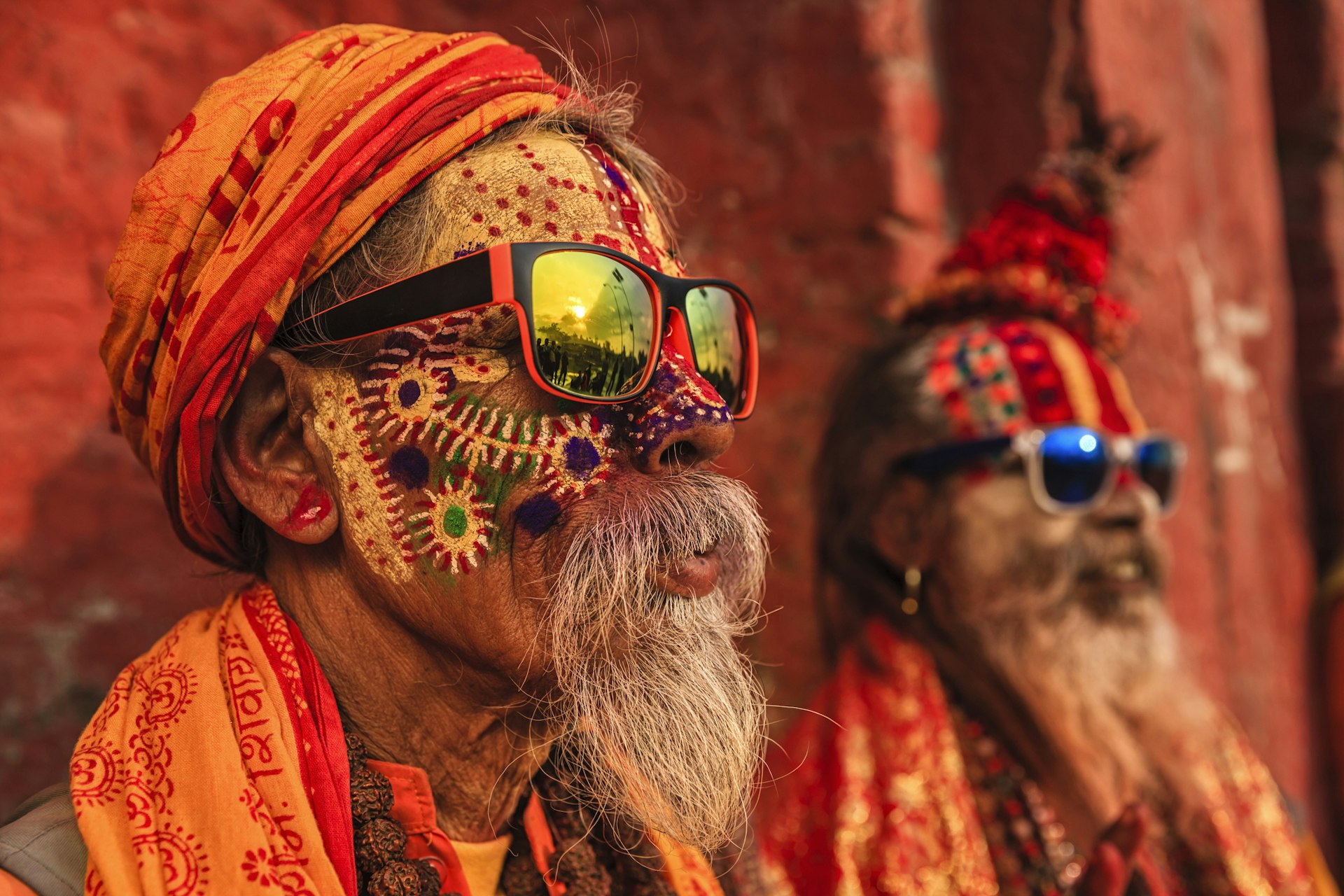
12. Respect etiquette at religious sites
Religion is taken very seriously in India, so it pays to know the rules and expectations for visits to temples, mosques, monasteries, gurdwaras (Sikh shrines), synagogues and churches. Always check if you are allowed to enter – some temples and mosques are closed to people who don’t follow the faith. Mosques may also be closed to visitors during prayers or on Fridays.
If asked to do so, remove your shoes before entering any religious building, and be prepared to cover your head with a scarf or shawl. Generally, always cover your legs and arms (a sarong can be handy as an emergency cover-all). Some temples also ban leather goods, and many religious sites do not allow photography.
Avoid pointing the soles of your feet towards a person or deity – this is considered disrespectful. The same goes for touching any person or effigy on the head. It is conventional to walk around Buddhist and Hindu shrines in a clockwise direction, in a ceremonial circuit known as a parikrama .
Making an offering or leaving a donation is often expected – locals always offer something, but be wary of people waving receipts showing huge donations. Giving something is appropriate, but don’t feel pressured into leaving large sums.
13. Giving alms is common but up to you
The giving of alms has a long history in India, and foreigners can expect to be approached regularly with requests for money. Whether you give or not is a personal choice, but many Indians give on a daily basis, particularly when visiting temples and mosques. Be aware that some requests for money will be scams, and you may be able to do more good by giving your time or cash to charity or aid organizations you’ve taken time to research, rather than handing out cash.
14. Respect local social attitudes
India has complex social rules about respect for elders. Depending on where you are traveling to, older people are often greeted with the honorific “auntie” or “uncle,” and the ending ji may also be added to someone’s name as a sign of respect.
Outside bigger cities, India can be quite conservative when it comes to interactions between unmarried men and women. Also, most parts of India are conservative when it comes to same-sex relationships. Whatever your sexuality, it’s best to avoid public displays of affection.
15. Street harassment is unfortunately common
Although harassment can happen anywhere, parts of India are constantly in the news owing to a lack of women’s safety. Beyond long, unwelcome stares and persistent attempts to start a conversation, more serious assaults are also a risk. Groping is common in crowds (particularly during festivals).
Exercise caution like you would anywhere else, and remain alert. Never get into a taxi or auto rickshaw containing anyone other than the driver, and avoid walking alone in quiet areas, particularly at night. Decline offers of food or drinks from strangers.
If traveling by public transport as a woman, it's best to seek out train carriages and designated seating reserved for women. Wearing a wedding ring (even if not married) and using dark sunglasses and headphones can buy you some privacy on public transport. If you are being hassled, drawing loud attention to the intrusion may encourage others to come to your aid.
16. Keep track of security situations in India
India has seen deadly attacks by separatist and Marxist groups and Kashmiri insurgents. Monitor the local news and be alert for suspicious behavior, particularly around major tourist sites. Always check the security situation before traveling to Srinagar and the Kashmir Valley in case of flare-ups of unrest. Strikes, demonstrations and protests are also best avoided, as violence is a risk. It goes without saying but in the event of trouble, obey local curfews and stay inside – your hotel is probably the safest place to be.
17. Take the altitude seriously when hiking
Acute Mountain Sickness (AMS) is a risk when traveling above 2500m (8202ft), which covers most of the Indian Himalayas . AMS can be fatal, so always ascend slowly and take rest days to allow your body to acclimate to significant elevation changes. If you begin to feel ill while hiking in the mountains, stop, and if your symptoms don’t improve, descend immediately.
18. Familiarize yourself with local rules and regulations
India has a few laws and regulations that visitors might be unfamiliar with. For instance, taking photographs of bridges, the periphery of military camps and border crossings – or flying drones over them – is considered a serious security issue.
When traveling by plane internally in India, you may be asked to surrender batteries from devices in your cabin bags. Smoking is banned in most public places, and a few states also have bans on the consumption of beef – killing or injuring a cow in a road accident, even accidentally, can lead to violent reprisals.
To avoid sticky situations, take the time to research where you’re going, and talk to staff at your hotel or hostel or your B&B host for advice on things to be aware of.
19. Steer clear of drugs
India may have a reputation amongst travelers as a place to push boundaries, but its drug laws are strict. Possessing even small amounts of drugs for personal use can lead to a prison sentence.
Some religious groups are permitted to consume marijuana for ceremonial purposes, but that often doesn’t extend to tourists. You can, however, find bhaang – a marijuana mixture made with the leaves (rather than the bud) of the cannabis plant – at government-approved bhaang shops.
20. Avoid the tap water
The tap water in India is not potable. Drinking or brushing your teeth with it can be a fast track to stomach troubles – the most common illness tourists experience in India. Stick to purified or bottled water (or even better, purify your own to avoid contributing to India’s plastic waste mountain).
The water rule extends to ice (be wary of ice in drinks and ice cream) and to uncooked foods, particularly salads and dishes such as coriander chutneys, which may have been washed with contaminated water. When eating fruit, stick to things you can peel or wash thoroughly yourself, and be cautious of freshly prepared juices. Hot drinks are generally fine, so drink your fill of chai (milky tea, often spiced and sweet).

21. Watch local news to keep track of natural disasters
Some geographical areas in India are prone to natural disasters, and the risk is higher in certain seasons. Hilly areas of Himachal Pradesh, for instance, often see flash flooding and landslides during the monsoon. Be alert to signs of natural disasters and keep an eye on the local news so you know which areas to avoid. Follow the Indian Meteorological Department’s website as well as their social media handle for timely updates.
If you are caught up in a natural disaster, follow the advice of emergency workers and try to leave the area quickly.
22. Spot the scams
India has a reputation for scams designed to separate tourists from their money, and touts and confidence tricksters can often be found where tourists gather. Get tourist information and make bookings at official offices, rather than “tourist offices” you have been led to by people offering unsolicited help.
If anyone steers you to a hotel, shop or other establishment without you asking, they may be angling for a commission, which will be added to the price you pay. Be dubious of claims that the place you want to go is “closed” – always check yourself to be sure.
Exercise common sense and be wary of deals that sound too good to be true – for example, the gem scam, where travelers are tricked into buying worthless gems to “sell at a profit back home.”
This article was first published March 2022 and updated December 2023
Explore related stories
Destination Practicalities
Jan 11, 2024 • 4 min read
Here's what you need to know about visa requirements ahead of travel to Belize.

Jan 5, 2024 • 20 min read

Jan 2, 2024 • 8 min read

Dec 27, 2023 • 8 min read

Dec 20, 2023 • 11 min read

Dec 13, 2023 • 7 min read
Dec 11, 2023 • 14 min read

Dec 1, 2023 • 4 min read

Nov 21, 2023 • 6 min read

Nov 7, 2023 • 8 min read
Mahout Resort


View prices for your travel dates
- Excellent 0
- Very Good 0
- English ( 0 )
Own or manage this property? Claim your listing for free to respond to reviews, update your profile and much more.
MAHOUT RESORT $78 ($̶8̶9̶)
Hotels.com Rewards is now One Key™
Mahout resort, choose dates to view prices, photo gallery for mahout resort.

Overview of Mahout resort
Popular amenities.
- Pet friendly Pet friendly Pet friendly
- Breakfast included Breakfast included Breakfast included
- Parking included Parking included Parking included
- Free WiFi Free WiFi Free WiFi
- Laundry Laundry Laundry
Main amenities
- Daily housekeeping
- Business center
- Communal living room
- Self-serve laundry
- Multilingual staff
- Picnic area
- Luggage storage
- Limited hour front desk
- Tour/ticket assistance
Feel at home
- Private bathroom
- Separate sitting area
- Laundry facilities
- Coffee/tea maker
Explore the neighborhood
- Popular Location Pookode Lake 6 min drive
- Popular Location Hornbill Park 6 min drive
- Popular Location Banasura Sagar Dam 34 min drive
Room options
View all photos for cascade villa.
Cascade Villa
- 1 Double Bed
View all photos for Redstone Villa
Redstone Villa
View all photos for family cottage.
Family Cottage
- Mountain view
- 1 King Bed, 1 Queen Bed and 1 Twin Bed
View all photos for Grove Villa B1
Grove Villa B1
View all photos for bamboo shack.
Bamboo Shack
View all photos for grove villa a2, grove villa a2, view all photos for grove villa b2, grove villa b2, view all photos for grove villas.

Grove Villas
View all photos for royal chalet.

Royal Chalet

Grassroots Wayanad, Valley-view Tents

B'camp Resorts & Homestays

Wayanad Wild Rainforest lodge by CGH Earth

The Leaves Resort Vythiri

Arayal Resorts: A Unit of Sharoy Resort, Wayanad

Great Trails Wayanad by GRT Hotel

The Sanihara

Karapuzha Village Resort

Jeevess Ayurveda

LakeRose Wayanad Resort
About the neighborhood, what's nearby.
- Pookode Lake - 6 min drive
- Hornbill Park - 6 min drive
- Karapuzha Dam - 21 min drive
- Karlad Lake - 25 min drive
- Banasura Sagar Dam - 34 min drive
Getting around
- Calicut Intl. Airport (CCJ) - 173 min drive
Restaurants
- Affas Udupi Pure Veg Restaurant - 5 min drive
- Taste and Mist - 2 min drive
- The Bungalow Restaurant - 5 min drive
- India Gate Restaurant - 3 min drive
- The Windflower Resort and Spa Vythiri - 8 min drive
About this property
At a glance.
- Arranged over 2 floors
Arriving/Leaving
- Check-in start time: 2:00 PM; Check-in end time: anytime
- Minimum check-in age: 18
- Check-out time is noon
Restrictions related to your trip
- Check COVID-19 restrictions.
Special check-in instructions
- The front desk is open daily from 9:00 AM - 7:00 PM
- Guests will receive an email 48 hours before arrival with check-in instructions; front desk staff will greet guests on arrival
Required at check-in
- Credit card, debit card, or cash deposit required for incidental charges
- Government-issued photo ID may be required
- Minimum check-in age is 18
- Pets stay free (dogs and cats only)
- Service animals welcome
- Free WiFi in rooms
- Free secured onsite self parking
Other information
- Designated smoking areas
Property amenities
Food and drink.
- Free cooked-to-order breakfast each morning 7:30 AM–10:30 AM
- Mountain climbing nearby
Working away
- Front desk (limited hours)
- 11 buildings/towers
- Traditional architecture
Accessibility
- No elevator (single level property)
- Well-lit path to entrance
- Stair-free path to entrance
- Tile flooring in public areas
- Tile flooring in room
Room amenities
Be entertained.
- MP3 docking station
- 32-inch LED TV
- Cable TV channels
Home comfort
- Electric kettle
- Pillowtop mattress
- Bed sheets provided
What to enjoy
- Balcony or patio
Stay connected
- Free bottled water
- Restaurant dining guide
Fees & policies
Children & extra beds.
- Rollaway beds are available for INR 1100.0 per day
Also known as
Frequently asked questions, most popular destinations.
Mahout Resort

View prices for your travel dates
Reviews we perform checks on reviews. tripadvisor’s approach to reviews before posting, each tripadvisor review goes through an automated tracking system, which collects information, answering the following questions: how, what, where and when. if the system detects something that potentially contradicts our community guidelines , the review is not published. when the system detects a problem, a review may be automatically rejected, sent to the reviewer for validation, or manually reviewed by our team of content specialists, who work 24/7 to maintain the quality of the reviews on our site. our team checks each review posted on the site disputed by our community as not meeting our community guidelines . learn more about our review moderation..
- Excellent 0
- Very Good 0
- English ( 0 )
Own or manage this property? Claim your listing for free to respond to reviews, update your profile and much more.
MAHOUT RESORT - Updated 2024 Prices (Kottappadi Part, India)
- Central America & Mexico
- Middle East
- South America
- Travel Advice
- Travel Gear & Accessories
- Work With Me
The Job of a Mahout
What is a mahout.
A mahout is a person (traditionally male) who works with, takes care of and tends to an elephant. A mahout’s job usually starts at a young age and they often stay with the elephant for the majority (if not their whole) life. Although in some tourism camps an elephant may have multiple mahouts, as these elephants are owned by the camps and not the mahouts themselves. This arrangement is not suggested as a mahout-elephant bond is a strong, trusting one and not one that can be interchanged with other mahouts.
Traditionally there were three distinct types of mahouts, the Yukthimah who use ingenuity to outsmart their elephants, the Reghawan who use love in their training, and the Balwan who use cruelty to teach their elephants to behave.
Mahouts often spend more time with their elephant then they do their own families. Being a mahout takes pure dedication as it requires you to spend endless amounts of time caring for your elephant. In a place like the Elephant Nature Park in Chiang Mai, Thailand, the mahouts spend all day with their elephant, and then take turns amongst each other rotating a night shift to be sure the elephants have all the food, warmth, etc. they need throughout the night.
Training of a Mahout
Elephants choose their mahout, they decide whether or not they will accept them, and one of the major deciding factors in this (if done the humane way) is love. If you don’t love your elephant, the elephant will not love you. The unfortunate thing is, the tradition of a mahout is dying out, and it is much harder to find a good mahout. Now people are looking at elephants as a way to make money, and many mahouts are getting involved in this field for that reason solely, not for their love of the animal and the tradition.
The training of a mahout is often passed down from one generation to another, sort of like a family business. Back in the old days, being a mahout was a very prestigious occupation and you were seen as a hero. Now-a-days many mahouts aren’t actually trained mahouts, and really know nothing about elephants and how to care for them. This is where the biggest issue is with responsible care for domesticated Asian elephants.
Training used to be in the hands of senior mahouts and monks, now it is often done through training courses that are offered in a few different areas in Asia, apprenticeships at camps, or unfortunately through crash courses where what would normally be taught in years is taught in a few days.
Organizations like the Save the Elephant Foundation in Chiang Mai are working to better educate mahouts on the proper way to train elephants and how they can use positive reinforcements (like you would with a child) as oppose to mistreatment and abuse. Unfortunately the laws around the misuse of elephants in all Southeast Asian countries are minimal, so organizations like this are key to trying to change the mahout-elephant relationship.
Training of an Elephant
This is where the controversy starts around mahouts in Southeast Asia and beyond. There are several inhumane ways to train an elephant that unfortunately are what is giving mahouts a bad reputation. Many believe in the method of “ crushing ” an elephant at a young age. Which is a terrible method that involves tearing away the young elephant from their Mother too early, locking them in a tiny cage and beating them until they break their spirits. Once this process is done the elephant will know to obey their mahout, in reality the elephant is too scared not to.
Many mahouts also believe in the use of chains, bull hooks, ear halters, and other inhumane devices to help “keep their elephants in line.” Take a look at this terrifying training manual I found online that goes over some of these devices that can be used on elephants. To me it looks like something that would only be used in a horror movie, not on living, majestic creatures.
It is unfortunate that things like this happen with mahouts and their elephants in Asia. It truly gives a job of a mahout, which should be selfless, a bad reputation. Traditional mahouts that still believe in an elephant being a sacred animal and not a money maker, turn to positive reinforcement such as food to get their elephants to listen to them.They believe that showing love to their elephants will only build trust, therefore there is no need for the unnatural contraptions mentioned above.
In a documentary called, The Shocking Secrets Behind Thailand’s Elephant Tourism Industry , I watched prior to writing this article, when some mahouts were asked about the bull hooks, they said that it was the only way to tame the elephants, and some mahouts use it with more force than others. It is evident that there needs to be stronger reinforcement from the government that all mahouts must go through proper training to care for an elephant the way they should be cared for, and that’s the only way that we will see a change in the way elephants are being treated.
Mahouts are dedicated people, who have a thankless job, and it is my only hope that the proper ways of caring and training an elephant can be more readily available for mahouts. It is a given that domesticated elephants are going to exist, especially with the depleted forests in places like Thailand, and the fact that these elephants no longer know how to survive in the wild. Since domesticated elephants will continue to exist in places like Thailand, organizations are starting to popup across Asia to help better train and teach mahouts about caring for their elephants humanely, such as the Save The Elephant Foundation , Mahouts Foundation and Elephant Aid International. To this day I’m thankful for the traditional mahouts that still exist who give elephants the lives they deserve, now lets hope we will start to see a bigger transition in the mahout-elephant culture in Southeast Asia in the near future.
Click here to watch an interview on a mahout elephant relationship and what makes this ancient traditional occupation so special.
Other elephant reading material:
- The Deal Behind Riding Elephants
- On A Quest to Save Asian Elephants
- Visiting the Elephant Nature Park
Sources: WiseGEEK Mahoutship & Elephant Conservation in Thailand The Shocking Secrets Behind Thailand’s Elephant Tourism Industry (Video) *Photos were all taken at the Elephant Nature Park in Thailand
You Might Also Like
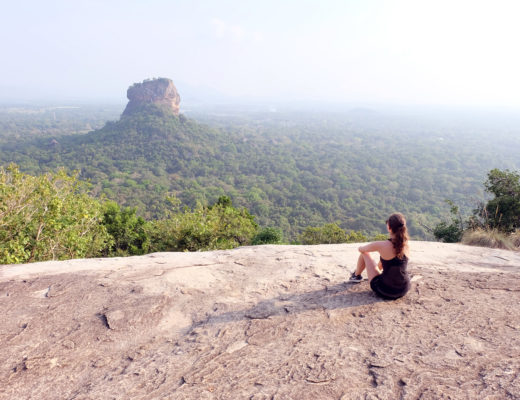
Four Things to do in Sigiriya, Sri Lanka and Area

Kuang Si Waterfalls & Laos Temples
An Indian Jewel: The Taj Mahal
No comments, leave a reply cancel reply.


Embarking on a transformative journey through six chapters, we traverse India's landscape, exploring pioneering startups and their revolutionary...
- Sustainability
- Agriculture
- Brand Campaigns
- Watch inspiring videos
- Advertise With Us
- Press Coverage
Follow Us On
Download App
Who Is Parbati Barua? Meet India’s 1st Female Mahout Honoured With The Padma Shri
Parbati Barua, also known as ‘Hasti Kanya’, is India’s first female mahout who was awarded the prestigious Padma Shri on Republic Day, 2024. Here’s how she fell in love with elephants and dedicated her life to the gentle giants.
Similar Story

Too Much Sugar in 'Cerelac'! Guide On How To Design a Healthy Food Plan For Your Baby
A recent report found that Nestle adds almost 2.7g of sugar in baby food like Cerelac in India. We spoke to experts to help young parents feed balanced and nutritious meals to babies and toddlers.

Elections 2024: What Makes Voter Ink So Difficult to Remove?
Elections 2024: The voter ink or the indelible ink can stay on a voter's finger anywhere between 2 to 30 days. Here's what it is made of!
This story made me
Tell Us More

Didn't Qualify UPSC, Still Inspires Hundreds: Why an Aspirant's 'No-Selection' Post Is Going Viral
Kunal Virulkar’s post on X about not being selected for UPSC CSE celebrates the efforts of every aspirant. Here's why it’s important to support this narrative.
If you found our story insightful, informative, or even just enjoyable, we invite you to consider making a voluntary payment to support the work we do at The Better India. Your contribution helps us continue producing quality content that educates, inspires, and drives positive change.
Choose one of the payment options below for your contribution-
By paying for the stories you value, you directly contribute to sustaining our efforts focused on making a difference in the world. Together, let's ensure that impactful stories continue to be told and shared, enriching lives and communities alike.
Thank you for your support. Here are some frequently asked questions you might find helpful to know why you are contributing?

Sounds Interesting? Share it now!
1 A Mango That Costs Rs 12000 a Piece? The Story Behind India's Most Expensive Mango Varieties
2 8 Best Idli Places in Bengaluru Which Serve Extra Love For 'Thatte Idlis'
3 Too Much Sugar in 'Cerelac'! Guide On How To Design a Healthy Food Plan For Your Baby
4 How to Ace The UPSC CSE Personality Test? IAS Officer With AIR 7 Shares Tips
5 'It's Not Rocket Science': Farmer Uses Hydroponics to Grow Strawberries & Turn His Life Around
- Get positive stories daily on email
- Join our community of positive ambassadors
- Become a part of the positive movement

- Personal Finance
- Today's Paper
- Partner Content
- Entertainment
- Social Viral
- Pro Kabaddi League
Who is Parbati Baruah, India's 1st female mahout honoured with Padma Shri?
Parbati baruah, also known as hasti kanya, holds the unique distinction of being india's first woman mahout.
)
Parbati Baruah (Photo: Twitter)
Listen to This Article
Who is parbati baruah, govt slaps penalty on four firms that failed to hire female directors, parties in telangana highlight women-centric schemes to woo female voters, justice fathima beevi, india's first woman judge of supreme court, dies, female govt employees may now nominate child for pension before husband, who is vyommitra the female robot isro is sending on gaganyaan mission, isro successfully deploys magnetometer boom on board aditya-l1 spacecraft, 187 fresh covid-19 cases in india; 1 death reported in maharashtra, r-day parade: 1500 dancers performed folk dances at kartavya path, book on life, legacy of 'jan nayak' karpoori thakur to hit stands in may, republic day 2024: j-k govt announces awards for 36 individuals of ut, parbati baruah’s journey as mahout.
Don't miss the most important news and views of the day. Get them on our Telegram channel
First Published: Jan 26 2024 | 3:57 PM IST
Explore News
- Suzlon Energy Share Price Adani Enterprises Share Price Adani Power Share Price IRFC Share Price Tata Motors Share Price Tata Steel Share Price Yes Bank Share Price Infosys Share Price SBI Share Price Tata Power Share Price HDFC Bank Share Price
- Latest News Company News Market News India News Politics News Cricket News Personal Finance Technology News World News Industry News Education News Opinion Shows Economy News Lifestyle News Health News
- Today's Paper About Us T&C Privacy Policy Cookie Policy Disclaimer Investor Communication GST registration number List Compliance Contact Us Advertise with Us Sitemap Subscribe Careers BS Apps
- Budget 2024 Lok Sabha Election 2024 IPL 2024 Pro Kabaddi League IPL Points Table 2024
How Indians Are Traveling Now: Takeaways From MakeMyTrip’s First Trend Report
Bulbul Dhawan , Skift
April 22nd, 2024 at 10:09 AM EDT
MakeMyTrip shares insights into changing preferences of Indian travelers as the Indian tourism industry is poised for significant growth in 2024.
Bulbul Dhawan
Indian travelers have an increased interest in weekend getaways and spiritual tourism, according to online travel agency MakeMyTrip’s first-ever travel trends report . Searches for destinations with or around religious spots increased by 97% in the last two years, the platform stated in the report, which was released on Monday.
Spiritual tourism is also leading the growth of tourism in tier-2 and tier-3 cities. MakeMyTrip recorded a 585% increase in searches for Ayodhya in 2023. Gains were 343% for Badrinath, and 359% for Ujjain.
In the domestic hotels category, weekend getaways have seen the highest growth. Popular travel destination Jim Corbett has seen an year-on-year increase of 131% in terms of search volumes, followed by Ooty and Munnar. “A large number of travelers are driving to these destinations from nearby metros,” MakeMyTrip stated in the report.
Skift’s earlier report had mentioned how the Indian tourism industry is poised for significant growth, with estimates projecting a revenue of $24 billion in 2024 .
Increased Discretionary Spend on Travel
The number of travelers taking more than three trips a year in 2023 has grown by 25% as compared to 2019. Indians are also spending more discretionary income on travel, MakeMyTrip said. There has also been an increased interest in domestic travel and travel to unexplored destinations in the country, especially because of the country’s improved infrastructure.
Staycations and experience travel increased in 2023. Family travel bookings witnessed a 64% year-on-year increase, while solo travel bookings increased by 23%. Two people traveling together accounted for 50% of all bookings, MakeMyTrip shared. It also recorded December and May as the most preferred months for travel.
Spontaneous Domestic Trips, But Planned International Travels
According to the report, Indians are spontaneous travelers when it comes to domestic bookings. As much as 46% of domestic flight bookings were done in less than a week before the date of travel, it stated.
International bookings, however, witnessed a longer planning period, with 51% of the international flight bookings having been done at least 15 days before departure. One-third of all international bookings were made more than a month in advance.
MakeMyTrip observed the same pattern in hotel bookings. More than 50% of the domestic hotel bookings for leisure were made less than a week before travel. One-third of international hotel bookings were made at least 30 days in advance.
Preferences of Indian Travelers
As much as 30% of all international travel searches from India were for Dubai, Bangkok, and Singapore. “London, Toronto, and New York were the most searched long-haul destinations,” MakeMyTrip stated in the report. There has also been an interest in international travel during long weekends, as the platform recorded a surge in searches for Bali, Bangkok, Phuket, and Singapore.
When it comes to domestic travel, two-thirds of the travelers prefer to pre-select their flight seats. During international travel, this figure drops to 40%, the platform shared. Additionally, indigenously developed unified payments interface (UPI) is the most preferred mode of payment for Indian travelers and accounts for 36% of all transactions.
India is also witnessing an increase in the popularity of travel gift cards. Half of the travel gift cards are gifted on the occasion of weddings, while the other 50% are gifted on occasions such as birthdays and festivals.
Hotels continue to be the most popular type of accommodation, with searches for hotels increasing by 39% year-on-year in 2023. Couples and family travelers formed the majority of the guests booking for hotels.
Alternate accommodations witnessed a 24% increase in searches. Friends and larger groups preferred to book homestays, apartments, and villas, while more solo travelers favored hostels.
Skift India Report
The Skift India Report is your go-to newsletter for all news related to travel, tourism, airlines, and hospitality in India.
Have a confidential tip for Skift? Get in touch
Tags: flight bookings , flight search , hotels , india , india outbound , india travel , international travel , makemytrip , middle class , online travel agencies , online travel companies , religious travel , skift india report , tourism , travel spending , Travel Trends
Photo credit: Weekend getaways have seen the highest growth in the domestic hotels category. Uriel Mont / Pexels
- Entertainment

India’s first woman ‘mahout’ breaks the glass ceiling to win Padma Shri award

Guwahati, April 22 (IANS) Popularly known as ‘Elephant Girl’ (Hasti Kanya) in Assam, 67-year-old Parbati Baruah is India’s first woman mahout (elephant keeper) who was conferred the Padma Shri award on Monday in recognition of her work in animal conservation and dispelling preconceptions to make a name for woman in a field that has historically been dominated by men.
She was handed over the Padma award in a ceremony held at the Rashtrapati Bhavan in New Delhi.
Born into the Gauripur royal family in the Goalpara district of Assam, Parbati and her father Prakritesh Barua caught their first elephant together when Parbati was 14-years-old in the Kachugaon woods of Kokrajhar district.
Parbati spent 40 years reducing human-elephant conflicts and fighting against gender stereotypes in this field.
Human-elephant confrontations have a long history in Assam, and Parbati was instrumental in developing government regulations to keep them under control.
She became a master at taming wild elephants.
Her expertise on the behaviour of elephants made her well-known not just in Assam but also in nearby states like West Bengal and Odisha.
Parbati also assisted the forest authorities in driving troublemakers back into the forests from agricultural fields.
‘Queen of the Elephants’ is the title of a book written about her by British travel writer and naturalist Mark Roland Shand, published in 1996. Later, the BBC produced a documentary that was widely praised.
Following at least 40 years of continuous service as a mahout, Parbati committed her life to animal conservation, and she is currently a part of the International Union for Conservation of Nature’s Asian Elephant Specialist Group (IUCN).
This is her family’s second Padma honour.
The Union government earlier also awarded the renowned folk singer Pratima Pandey Barua, her sister, a Padma Shri.
Pramathesh Barua, an award-winning filmmaker, is also related to this family.

India’s First Woman ‘Mahout’ Parbati Barua Among 110 Padma Shri 2024 Recipients
Despite the challenges faced by her family, parbati’s dedication to elephants and her skills as a mahout have made her a notable figure in the field of animal conservation..

Guwahati: President of India Droupadi Murmu on Thursday approved a total of 132 Padma Awards for the year 2024, including two duo cases (instances in which awards are counted as one), of which, five are Padma Vibhushan, 17 Padma Bhushan and 110 Padma Shri Awards.
Among the 110 Padma Shri recipients, three are from Assam, with one of them being Parbati Barua, India’s first female elephant ‘mahout’ (an elephant tamer and caretaker), who started taming wild elephants at the age of 14 to overcome stereotypes creating a space for herself in a traditionally male-dominated field. Parbati has been awarded Padma Shri for her contributions to social work (animal welfare).
The story of 67-year-old Parbati, popularly known as the ‘Hathi ki Pari’ (fairy of elephant), is fascinating and highlights her deep connection with elephants and dedication to their conservation. Born into the Royal Family of Gauripur, now a town in Assam’s Dhubri district, her early experiences in the jungles with her father Prakritish Chandra Barua shaped her interest in elephants. Parbati’s father, an eccentric hunter with a supernatural understanding of elephants, who had around 40 elephants in his royal stables, played a significant role in fostering her passion.
However, the family’s fortunes took a downturn in 1970 with the abolition of the Privy Purse, which ended the line of ‘Rajas’ (kings) of Gauripur. Stripped of their privileges and financial support, Parbati and her family faced significant challenges. Despite their reduced circumstances, Prakritish and Parbati returned to the forests, relying on selling elephants and providing their services to timber businesses to make a living.
Parbati’s skills as a mahout and her ability to capture and domesticate wild elephants became evident at a very young age. At the age of just 14, she successfully caught her first wild elephant, earning praise from her father. Over the years, she honed her expertise in rounding up and capturing elephants, becoming a sought-after figure in the jungles, tea plantations and rural areas of Assam, West Bengal and Odisha. Parbati also mitigated human-elephant conflicts with the help of scientific practices.
Parbati’s involvement in the Asian Elephant Specialist Group (AsESG), an organisation working in the field of animal protection, and the International Union for Conservation of Nature (IUCN), an international organisation which works for nature conservation and sustainable use of natural resources, further showcases her commitment to the conservation of these magnificent creatures. Despite the challenges faced by her family, Parbati’s dedication to elephants and her skills as a mahout have made her a notable figure in the field of animal conservation.
The Padma Awards, one of the highest civilian Awards of India, are conferred in three categories — Padma Vibhushan, Padma Bhushan and Padma Shri. The Awards are given in various disciplines and fields of activities including art, social work, public affairs, science and engineering, trade and industry, medicine, literature and education, sports, and civil service, among others. While Padma Vibhushan is awarded for exceptional and distinguished service, Padma Bhushan is awarded for distinguished service of high order and Padma Shri for distinguished service in any field. The awards are announced on the occasion of Republic Day every year. These Awards are conferred by the President of India at ceremonial functions which are held at the Rashtrapati Bhavan in March or April.

Top Headline

Trending News

Photogallery

Trending Opinion

Personal Corner


IMAGES
VIDEO
COMMENTS
MAhout is a small, highly personal travel and representation company which provides a face and a voice in the UK for India's finest, private, independent hotels; and suggests ideas for exploring this great and varied land. We are all about seeking out those delicious hotels which have something different to say and planning your dream trip ...
With India boasting some stunning game parks, MAhout is proud to represent the very best properties in a wide variety of them and they all combine well in different itineraries. The main wildlife 'hub' is Madhya Pradesh which is hugely pretty but involves quite a bit of travel and early starts, so it's important to end somewhere relaxing ...
MAhout is a small, ... Alternatively, with India being part of the vast Subcontinent, it is very easy to travel on to Sri Lanka, Nepal, Bhutan or The Maldives from here and this often makes for a lovely, varied way to end a holiday. If you have time, experiencing the culture of one of these other countries might be a lovely way to round off the ...
India is a land of diversity, with a rich tapestry of people that make up its vibrant society. It is home to myriad ethnicities (Indo-Aryan, Dravidian and Mongoloid); languages (it is a linguist's paradise with Hindi being the national language, English spoken almost through the country, but with c. 1950 other languages or dialects); and religions (80% are Hindu but it has the 3rd largest ...
There are no winners in the elephant tourism industry. written by World Animal Protection August 11, 2018. 'A mahout is an elephant rider, trainer, or keeper. Usually, a mahout starts as a boy in the family profession when he is assigned an elephant early in its life. They remain bonded to each other throughout their lives'.
MAhout is a small, highly personal representation company which provides a face and a voice in the UK for India's finest, private, independent hotels; and suggests ideas for travel in this great and varied land. We are all about seeking out those delicious hotels which have something different to say.
Mahout Resort Wayanad - An Experiential Jungle Stay with Waterfall. Wayanad Road, 673123 Kalpetta, India - Excellent location - show map. 8.7. Excellent. 22 reviews. Ambiance, environment, food overall a good experience.
Show on map. Mahout Resort Wayanad - An Experiential Jungle Stay with Waterfall. Wayanad Road, 673123 Kalpetta, India - Excellent location - show map. 8.7.
Generally many mahouts live in the deep forests near the hilly places. A mahout's day starts before dawn when he has to take the elephant to an early grazing in the lowlands around the valley. The bonding between the mahout and the elephant is so deep because these elephants see these people as much as they do their parents.
Mahout-Elephant Bond. The relationship between a mahout and an elephant is built on trust, respect, and mutual understanding. Mahouts spend years cultivating a deep connection with the elephants under their care. Through gentle and patient interactions, they develop an unspoken language and bond that allows them to communicate effectively.
The same rule applies when passing things to people - including money. If you get invited to someone's home, bring a small gift (flowers or sweets are always a safe bet) and remove your shoes before entering. It's polite to eat and drink what you are offered, even if you don't really fancy it. 9. Dress modestly.
A young elephant and his mahout, Kerala, India. A mahout is an elephant rider, trainer, or keeper. [1] Mahouts were used since antiquity for both civilian and military use. Traditionally, mahouts came from ethnic groups with generations of elephant keeping experience, with a mahout retaining his elephant throughout its working life or service ...
Now $49 (Was $̶5̶6̶) on Tripadvisor: Mahout Resort, Kottappadi Part. See traveler reviews, candid photos, and great deals for Mahout Resort at Tripadvisor.
View deals for Mahout resort. Near Pookode Lake. Breakfast, WiFi, and parking are free at this hotel. All rooms have balconies/patios and pillow-top mattresses.
There are more places to choose from in the Kottappadi Part area. See all properties. PRICE RANGE. £31 - £46 (Based on Average Rates for a Standard Room) LOCATION. India Kerala Wayanad District Kottappadi Part. Prices are provided by our partners, and reflect nightly room rates, including all taxes and fees known to our partners.
A mahout is a person (traditionally male) who works with, takes care of and tends to an elephant. A mahout's job usually starts at a young age and they often stay with the elephant for the majority (if not their whole) life. Although in some tourism camps an elephant may have multiple mahouts, as these elephants are owned by the camps and not ...
Book a room at Mahout Resort in Kalpatta, India. Luxury tent is located in 5 km from the centre. ... Actual travel distances may vary. Luxury tent Mahout Resort is located at Wayanad Road in Kalpatta in 4.5 km from the centre. Mahout Resort features and infrastructure. The car parking lot is located nearby a hotel.
Parbati Barua, also known as 'Hasti Kanya', is India's first female mahout who was awarded the prestigious Padma Shri on Republic Day, 2024. Here's how she fell in love with elephants and dedicated her life to the gentle giants. By Tina Freese. January 29, 2024. On India's 75th Republic Day, 132 people were awarded national honours ...
As India celebrates its 75th Republic Day, on January 26, the country has recognised the contributions of 132 citizens with Padma Awards for their contributions to various fields. Among the long list of awardees is Parbati Baruah, popularly known as 'Hasti Kanya', who gained fame as India's first woman elephant mahout.
Bulbul Dhawan. Indian travelers have an increased interest in weekend getaways and spiritual tourism, according to online travel agency MakeMyTrip's first-ever travel trends report. Searches for ...
Parbati Baruah, Popularly known as 'Elephant Girl', is India's first woman mahout, conferred the Padma Shri award. — IANS. Guwahati, April 22 (IANS) Popularly known as 'Elephant Girl' (Hasti Kanya) in Assam, 67-year-old Parbati Baruah is India's first woman mahout (elephant keeper) who was conferred the Padma Shri award on Monday in recognition of her work in animal conservation ...
Guwahati: President of India Droupadi Murmu on Thursday approved a total of 132 Padma Awards for the year 2024, including two duo cases (instances in which awards are counted as one), of which, five are Padma Vibhushan, 17 Padma Bhushan and 110 Padma Shri Awards. Among the 110 Padma Shri recipients, three are from Assam, with one of them being Parbati Barua, India's first female elephant ...